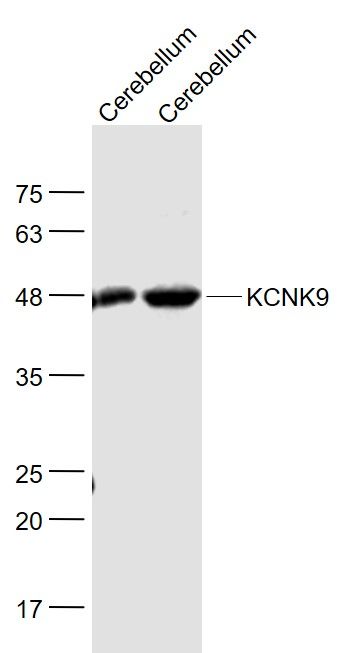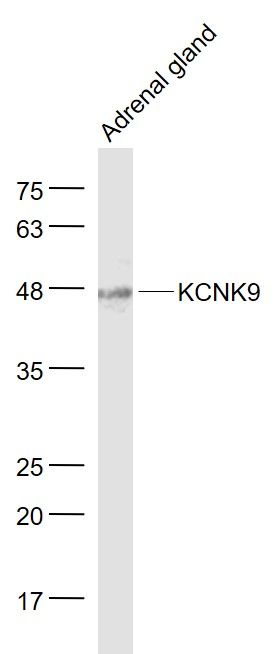KCNK9 or TASK-3 (TWIK-related Acid sensitive K+ channel) is a member of the potassium channel family of proteins that contain two-pore domain and four transmembrane domains. These channels are characterized as leak K+ channels that are sensitive to changes in the extracellular pH. The physiological functions of TASK channels are largely unknown; it has been proposed that they may be involved in the regulation of breathing, aldosterone secretion and anesthetic-mediated neuronal activity. They were found to act in neurons' membrane potential and in resting K+ currents.
Function:
pH-dependent, voltage-insensitive, background potassium channel protein.
Subcellular Location:
Membrane; Multi-pass membrane protein
Tissue Specificity:
Mainly found in the cerebellum. Also found in adrenal gland, kidney and lung.
DISEASE:
Defects in KCNK9 are the cause of Birk-Barel mental retardation dysmorphism syndrome (BIBAS) [MIM:612292]. A syndrome characterized by mental retardation, hypotonia, hyperactivity, and facial dysmorphism.
Similarity:
Belongs to the two pore domain potassium channel (TC 1.A.1.8)
SWISS:
Q9NPC2
Gene ID:
51305
Database links:
Entrez Gene: 428382 Chicken
Entrez Gene: 51305 Human
Omim: 605874 Human
SwissProt: Q9NPC2 Human
Unigene: 493037 Human
| Picture |
Sample:
Cerebrum (Mouse) Lysate at 40 ug
Cerebrum (Rat) Lysate at 40 ug
Primary: Anti- KCNK9 (SL5933R) at 1/1000 dilution
Secondary: IRDye800CW Goat Anti-Rabbit IgG at 1/20000 dilution
Predicted band size: 40 kD
Observed band size: 48 kD
Sample:
Adrenal gland (Mouse) Lysate at 40 ug
Primary: Anti- KCNK9 (SL5933R) at 1/1000 dilution
Secondary: IRDye800CW Goat Anti-Rabbit IgG at 1/20000 dilution
Predicted band size: 40 kD
Observed band size: 48 kD
|
|
|

